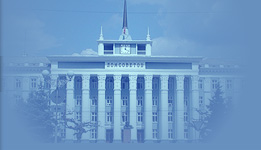Local administration of the town of Grigoriopol and Grigoriopol district
In ancient times (the 7-th-3-d centuries BC) Scythians, Sarmats, later Slavs lived in Grigoriopol land. The history of Grigoriopol is closely connected with the history of fraternal nations – Russians, Ukrainians, Armenians and Moldavians. Excavations near villages Butor, Tokmazeya, Krasnogorka proved it. Later Slavs lived in this territory. Between the 9-th and 12-th centuries these lands became the part of Old Russian state and Galicia. Later Lithuanians, Turks and Tartars predominated there. The first settlements of Moldavians (Speya, Tep, Tashlyk, Butor, Delakeu, Malaeshty and others) arose in the 17-th – 18-th centuries. In 1791 the territory between the South Bug and Dniester passed to Russia according to the Yassky Treaty.
In the course of Russian-Turkish war (1787-1791) almost 4 000 Armenians were moved from Ackerman, Ismail, Kaushany, Kiliya and Bendery to the left bank of the Dniester, Dubossary.
In 1792 the Edict of the empress Ekaterina II on improvements in the South was issued. It was written there: “The late Duke Grigoriy Aleksandrovich Potemkin-Tavrichesky founded the Armenian town called Grigoriopol near the Dniester between two valleys – Chernaya and Chernitsa. We confirm this setting and order to establish the Armenian town and call it “Grigoriopol”. There are documents informing about two versions of the origin of the town’s name. According to the first version Duke Potemkin ordered to call the town of Armenians Grigoriopol “in honour of his angel”; according to the second variant “he ordered to name the town in honour of the saint Grigoriy the Enlightener of Armenia”. Grigoriopol was a part of Tiraspol administrative unit of Hersonskaya province. The plan of town construction was confirmed by Ekaterina II. The solemn laying of the town was held on July 25, 1792.
Having established the Armenian colony in the south, the Russian government intended to turn it into the trade center. Grigoriopol played a vital part in the economy of the South of Russia till the ’30-s of the 19-th century. Grigoriopol dwellers were mostly engaged in farming, handicrafts and trading. Tanners of Grigoriopol occupied leading positions in overall production of the South of Russia. Grigoriopol was given its own coat in arms and seal in 1794. The first town major was Captain Turmanov Pavel.
The Soviet power was established in January, 1918. The Soviet of workers, soldiers and peasants’ deputies of Grigoriopol tried to put the first decrees of a new regime into force.
On October 12, 1924 Grigoriopol district was established. In 1932 dwellers engaged in agriculture united into collective farms (kolkhozes). The kolkhoz named after Dzerzhinsky F.E. became the largest one.
Grigoriopol dwellers fought against fascists during the Great Patriotic War. Secret patriotic organizations headed by Lansky G.N. and Rychkov N.G. were functioning in the district between 1942 and 1944. The partisan detachment under the command of Avteniev S.D. acted near the village Speia.
On April 12, 1944 Grigoriopol was liberated. 5 536 Soviet soldiers perished. Over 1500 Grigoriopol dwellers perished in the course of the Great Patriotic War.
In 1958 Grigoriopol district was reorganized. Some settlements, including Grigoriopol passed to Dubossary district, others passed to Tiraspol district.
On June 21, 1971 Grigoriopol district was established again. It included Gyrtopskiy, Delakeuskiy, Karmanovskiy, Kolosovskiy and Shybskiy rural Soviets of Dubossary district; Butorskiy, Krasnogorsky, Malaeshtskiy, Speiskiy, Tashlykskiy and Teiskiy rural Soviets of Tiraspol district. The area of the district was 821 sq. km, it has a population of 49 600 people.
Grigoriopol dwellers lost their relatives, many civilians perished during the aggression of nationalists of the Republic of Moldova against Pridnestrovie between 1991 and 1992.
The economy of the district is based on agriculture and industry. The state Presidential program on gasification is being put into practice successfully. Gas pipe-lines to 17 villages have been built (their length is 378 km).
There are a lot of beauty spots in Grigoriopol district, but scientists are still arguing about one sight – the underground corridors (catacombs) 10 kilometers long. Some scientists believed that the catacombs were built by Armenians while laying the first town buildings in the 18-th century; other researchers think that they were constructed under the dominion of Turkey. The fortune of underground constructions is still not clear.
On July 17, 2002 the status of the town was given back to Grigoriopol according to the Resolution of the Supreme Soviet of the Pridnestrovian Moldavian Republic.
Grigoriopol district is an administrative unit of the Pridnestrovian Moldavian Republic. It is situated in the central part of the republic on the left bank of the river Dniester. It borders on Dubossary and Slobodzeia districts of the Pridnestrovian Moldavian Republic, Kriulyany district of the Republic of Moldova, Frunzovka and Veliko-Mihailovka districts of Odessa region of the Ukraine.
As for the relief of the district, it is a hilly valley inclined to the south. The maximum height is 210 meters. The climate is moderate. The average fall-out is 450 mm. The black earth prevails; but there are also salt-marshes and loamy soil.
The area of the district is 822 sq. km, the number of the population is 51 200 people.
Nationalities:
Moldavians – 62%,
Ukrainians – 18%,
Russians – 15%,
Bulgarians – 0,4%,
Gagausians – 0,3%,
Jews – 0,3%
Other nationalities – 4%.
There are 31 settlements in the district.
The area of farming lands is 61 700 hectares, including 51 900 hectares of ploughed fields. 5 600 people are involved in farming. 15 agricultural enterprises, 62 farms and 46 peasant holdings produce agricultural production. 7 enterprises for processing and acceptance of agricultural production, for rendering services to the producers were established in the district.
There are such enterprises as
- State unitary enterprise “Grigoriopol factory-producer of polymers”;
- Closed joint stock company “Grigoriopol cannery”;
- State enterprise “Grigoriopol mine”;
- State enterprise “Grigoriopol timber enterprise”;
- Municipal enterprise “Grigoriopol industrial combine”;
- Municipal enterprise “Gas supply”;
- Limited company “Grigoriopolgas”.
The state company “Telekom” and its associated state unitary company “Grigoriopol post” were established. The state company “The Pridnestrovian radio and television center “Mayak” broadcasts radio and TV programs in our republic and to foreign countries.
The State Presidential program on gasification is implemented at great rate. As a result, 11 000 dwelling houses and flats (over 45 000 people) have been supplied with gas. The total length of new gas-mains is 350 km.
The educational system of the district includes 19 secondary schools, 22 kindergartens, an arts center for children, an orphans’ home of the Krasnikovs. 16 palaces of culture, 3 clubs, 26 libraries, 3 musical schools, an art school, 2 museums, a cinema and 7 folk collectives are functioning in the district.
There are 12 parishes of the Russian Orthodox Church here. There is a sport school, 11 football fields, 26 sport installations in the district. There are 2 hospitals, 8 ambulance stations, 16 medical centers, a district clinic, a clinic for children, a district maternity home and dentist’s clinic.
Pridnestrovian Moldavian Republic, Grigoriopol, Marks Street, 146
Phone: 373 540 22840 Fax: 373 540 22750




